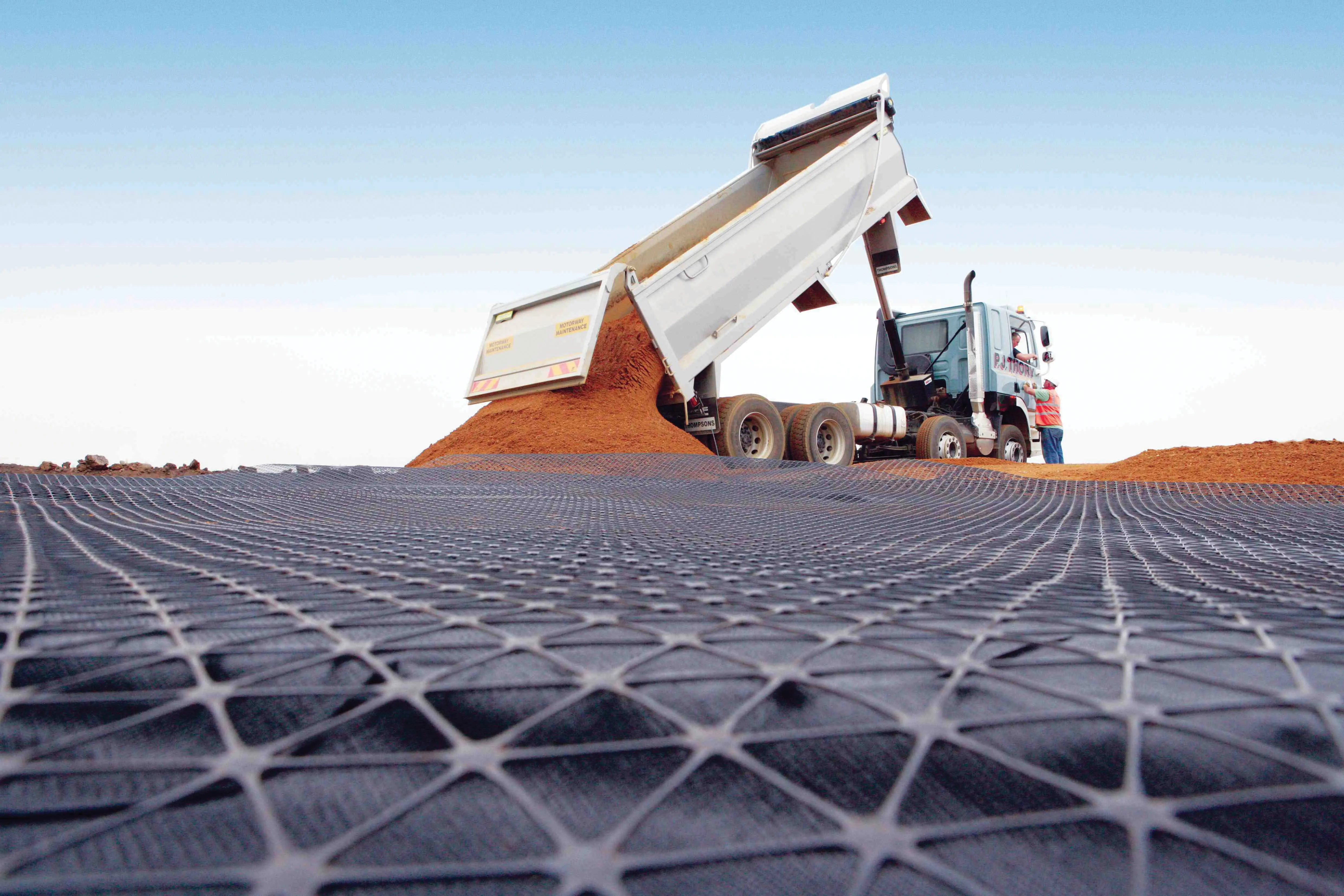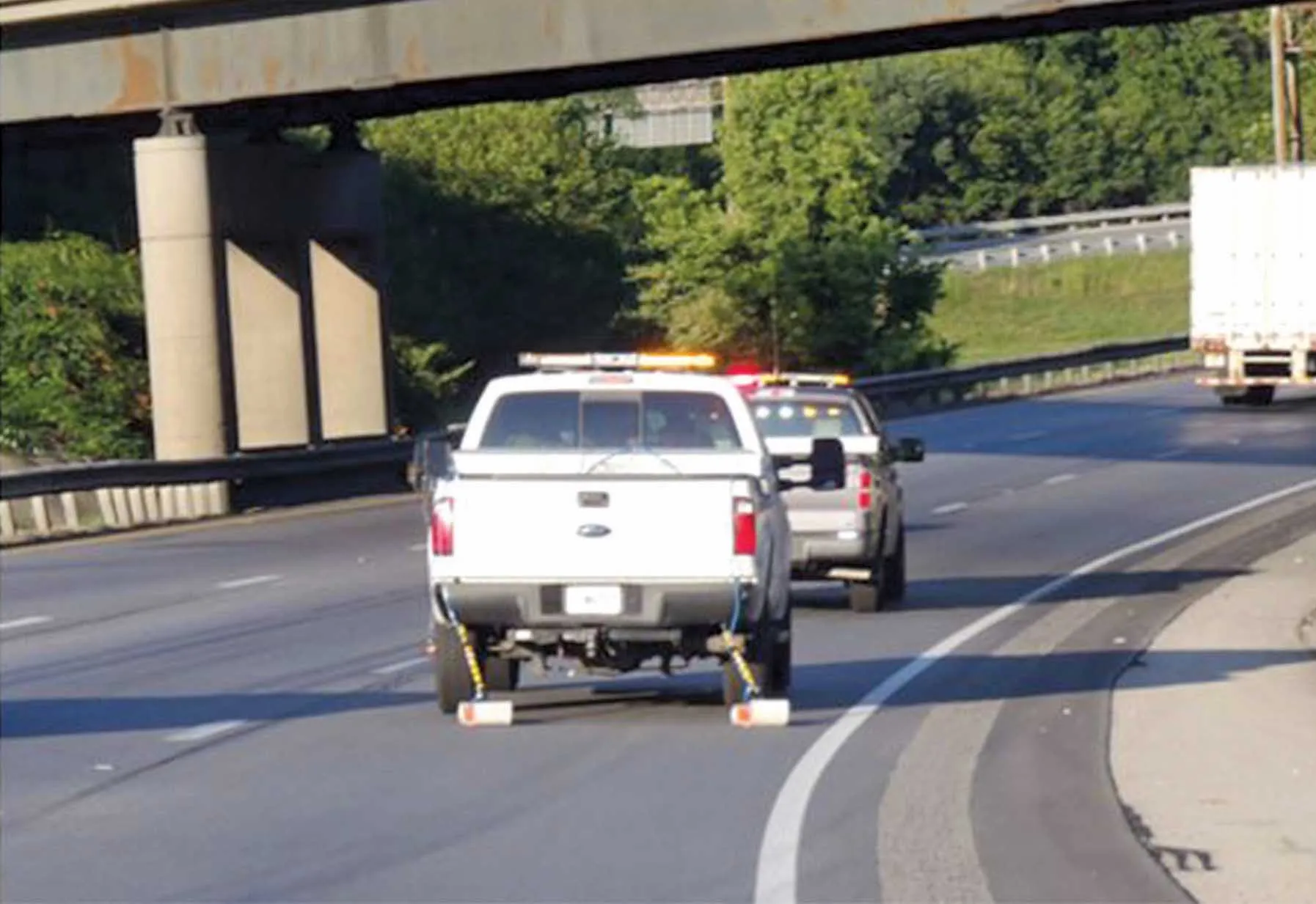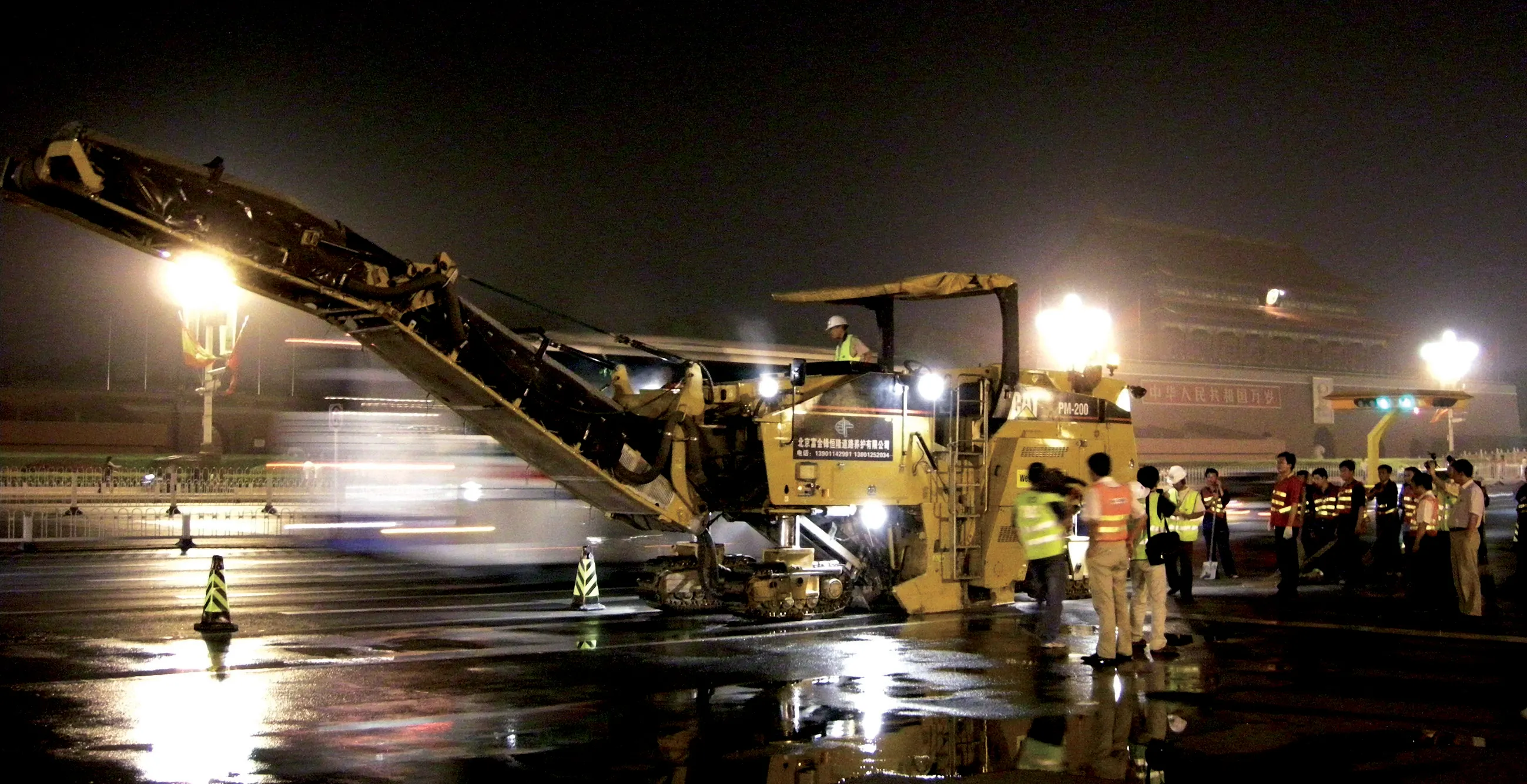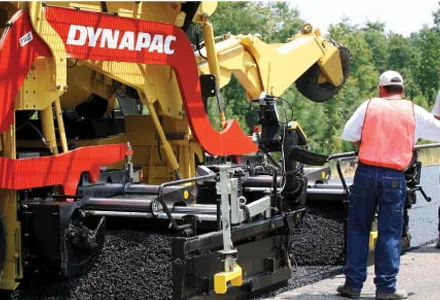Special fabrics are often used in civil engineering works, including highways, to make soil stronger Geosynthetics have been used in roadway construction for thousands of years with natural materials being mixed with soil to improve quality and stability. While today's products are much more sophisticated, the principles are the same. For example, when used with soil, geotextiles (permeable fabrics) can filter, separate, reinforce, protect, or drain, and they are often made from polypropylene or polyester,
March 13, 2012
Read time: 6 mins

Special fabrics are often used in civil engineering works, including highways, to make soil stronger
Geosynthetics have been used in roadway construction for thousands of years with natural materials being mixed with soil to improve quality and stability. While today's products are much more sophisticated, the principles are the same.For example, when used with soil, geotextiles (permeable fabrics) can filter, separate, reinforce, protect, or drain, and they are often made from polypropylene or polyester, coming in three basic forms: woven, needle punched or heat bonded.
The increasing use of geotextiles has seen the introduction of geotextile composites such as geogrids, geonets and meshes, which are known collectively as geosynthetics.
The different configurations offer geotechnical and environmental engineering design benefits and are widely used in civil engineering applications including roads, airfields, railroads, embankments, retaining structures, reservoirs, canals, dams, bank protection and coastal engineering.
A recent innovation is
Adding to its UK triumph at Civils 2007, where it was awarded Product of the Year, TriAx scooped two further European wins soon after its international roll-out. Gold medals were achieved at the Brno International Building Fair hosted in the Czech Republic as well as at Autostrada 2008 in Kiecle, Poland.
"The higher performance and cost advantage TriAx offers for ground stabilisation applications is becoming internationally acknowledged," says Jacek Kawalec, Tensar Regional Manager for Central Europe. "Its outstanding benefits provide engineers with a great opportunity to create better road structures for less cost and international interest has been intense."
Unlike conventional geogrids, comprising square or rectangular apertures, TriAx has a triangular structure which offers proven performance benefits for a variety of ground stabilisation applications.
Extensive research has refined TriAx's design features, resulting in a new kind of geogrid that increases aggregate confinement to offer greatly improved soil stabilisation properties.
According to Tensar such performance benefits are ideal for projects involving unpaved roads and permanent paved roadways, as well as combating differential settlement on weak or variable sub-grades. Economies are achieved through either savings in aggregate layer thickness or extensions in pavement service life, with cost, time and environmental advantages.
Jacek Kawalec continues: "TriAx has been six years in the making and represents what we believe to be the most significant innovation in geogrid technology for decades." TriAx was used during improvement work on the A66 road at Scotch Corner-Carkins Moor Improvement, Middlesbrough, north-east England in 2007.
The improvement work to the highway involved the remodelling of the junction with a side road, and the new layout required that the side road should pass over the site of a former quarry that had been filled with domestic waste. Not only did the waste material need capping over but there was a concern about differential settlement, particularly at the edge of the quarry wall where the road transitioned from a firm to a compressible subgrade.
The solution was a reinforced granular mattress, comprising multi-layer geogrids and good quality aggregate installed over the waste.
Then a transition detail was devised for the quarry edge. The opportunity was taken to introduce the Tensar TriAx geogrid and take advantage of the extra benefits the geogrid brings to stabilisation applications.
Meanwhile the growing demands for geosynthetics in China has seen Royal Ten Cate (Koninklijke Ten Cate) open a new geosynthetic materials factory in the country.
In 2005, Royal Ten Cate acquired the Polyfelt Group and TenCate Geosynthetics Europe started offering a wide range of TenCate Polyfelt products.
The company says that in the past year there has been just over a 20% increase in demand for geosynthetic fabrics (geotextiles) in Asia.
The company says the new Zhuhai production location for woven materials is needed to combine with TenCate's existing location for non-woven materials in Shah Alam, Malaysia, for an effective response to burgeoning growth and opportunities in the Asian market.
"This will enable TenCate Geosynthetics to benefit from the many infrastructural projects and extensive road and hydraulic construction underway in China, India and other countries," says the company.
TenCate's new production location will cover a total of 135,000m² (28,500m² have now been built on) and this will include personnel accommodation.
The Zhuhai factory will process polypropylene (PP) into fibres for geosynthetic materials including TenCate Geotube, a dedicated product for dike building and land reclamation.
Earlier this year,
Atlanta will be the site from which customers in the US and Canada, and later on also customers in South America, will be serviced.
The sales company is currently focusing on the sale of NAUE's Secugrid and Combigrid soil reinforcement products.
The company says that despite the difficult market situation in the US and the extremely weak US dollar, good sales figures were realised for the products, which are "technically and economically very competitive." The demand for Combigrid in particular is growing, since successful applications and test results were published.
For example, tests in the US to simulate the traffic passages on an unreinforced base course resulted in 75mm deep traffic ruts after 20 load cycles, and it took 540 load cycles when geogrid reinforcement (Secugrid 20/20 Q1) was used. However, when Combigrid was used, the corresponding traffic rut depth was not reached even after 100,000 load cycles.
"Using a composite product of geogrids with a nonwoven geotextile firmly bonded between the long and cross bars in the boundary layer to less portative, soft subsoils worked really well," says NAUE.
"The management considers the expansion of the business activities to North America to be an important strategic step in opening new markets for the NAUE Group." Combigrid is a flat composite geogrid from the Secugrid Q or R product series, and has firmly welded junctions and a centrally integrated Secutex non-woven component for reinforcing, separating and filter applications.
It combines all the requirements of a variety of properties in one single product. For this reason, the main area of use for Combigrid is on weak subsoils where, in addition to reinforcement, filter and separating properties are required. As a rule, this means subsoils with a CBR (California Bearing Ration) value of less than 3%. Thus, the areas of application for Combigrid are to be found in the reinforcement of base courses, foundations, access roads, pipeline trenches and throughout the road building sector.
It is available in PP or in polyester (PET), depending on project requirements, and is suitable for the use in all natural environments.
A good example of the use of Combigrid comes from Professor Manfred Nussbaumer, who is also the acting Chairman of the DGGT (
Looking for a solution to the problem, Combigrid 40/40 Q1 151 GRK 3 was recommended and is still working well as a reinforcement, separation and filtering layer in the refurbished access road with five-axle gravel trucks leaving no ruts.








